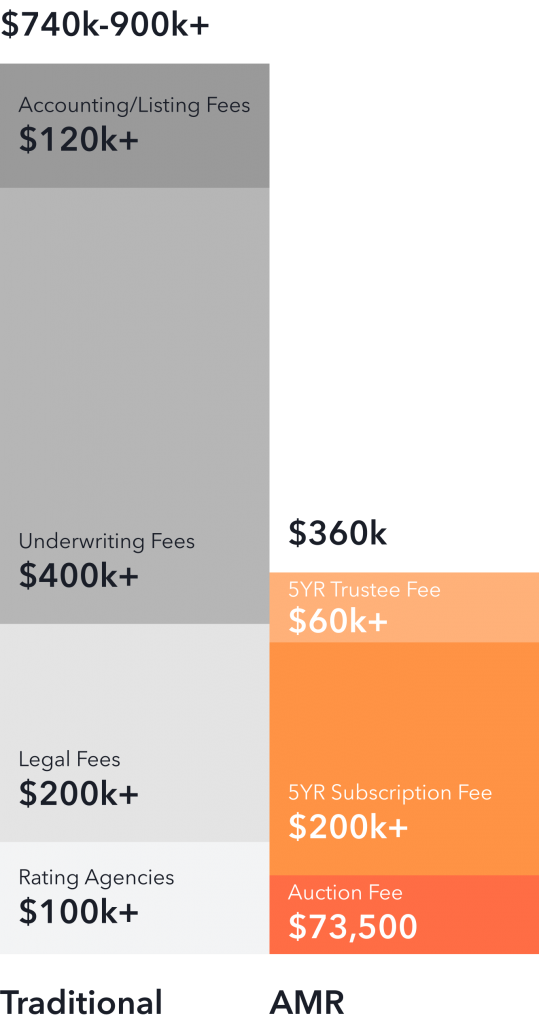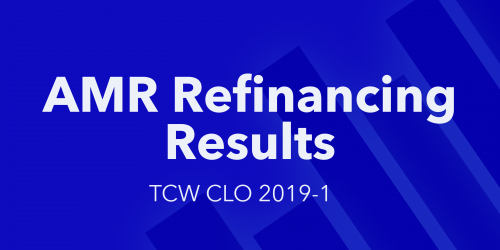CLO Refinancing: Applicable Margin Reset

Collateralized Loan Obligations (CLOs) are arbitrage vehicles. CLO equity has a residual claim to the portfolio’s principal and interest after all liabilities have been paid. A larger difference between what a CLO takes in and what it pays out means better arbitrage for equity investors. Once the non-call period is over, equity investors often choose to refinance to lower interest rates on CLO liabilities. In a world without friction, this task would be easy. In reality, refinancing can cost upwards of $1 million and can take up to three months to complete. Is there a better way to conduct this process?
Why is refinancing important?
Refinancings are the existential right of CLO equity holders. Leveraged loans, CLO collateral, are highly callable and are refinanced frequently by corporate issuers. Once a CLO is out of its non-call period — typically 2 years after issuance — its liabilities can be refinanced as well. If refinancing is successful, equity holders are able to better match assets and liabilities.
Why are improvements needed?
Traditional refinancing requires the retirement of old and issuance of new securities. This is costly, time-consuming and complicated. Investment bankers, legal counsel, and rating agencies are required to conduct the new issue. This can take up to three months and cost upwards of $1 million.
What’s Applicable Margin Reset?
Applicable Margin Reset is a simplified method of refinancing CLO tranches using an online auction process. Rather than refinancing a CLO through a single investment bank, participants are able to submit bids electronically through a multi-dealer process.
Days from Initiation to Settlement:
What’s the difference between AMR and traditional refinancing?
Whereas traditional refinancing requires multiple parties to arrange, rate and issue new securities, AMR only needs an Auction Service Provider and a Trustee to conduct a refinancing. With AMR, the original CUSIPs and deal structure are retained.
*Earlier deals’ timeline may vary
Rating agencies are uninvolved, and minimal legal counsel is required. The new rates on refinanced tranches are determined by the auction rather than a private negotiation by the arranger.
How does AMR work?
At issuance, AMR language is embedded in the CLO’s indenture. Once the CLO is out of its non-call period, the majority equity holder or collateral manager can initiate an AMR auction. Auction details are provided to the market, allowing broker-dealers to solicit bids from their clients. At the time of the auction, the bids are ranked from lowest margin to highest. If demand equals or exceeds the size of a tranche, the auction clears at its new lower rate.
Five to nine days later, depending on the indenture, the refinanced securities are transferred to their new owners via mandatory tender without the right to retain through DTC.
What’s the appeal for investors?
When a CLO is refinanced through an investment bank, only a handful of clients are contacted so the deal can be done in the shortest time possible, at the expense of potentially superior refinancing rates. AMR democratizes the market by holding an auction and bringing a wide array of participants to the table by involving multiple dealer secondary desks. Equity investors benefit from the reduced cost of AMR compared to traditional refinancing, which results in higher optionality and a higher probability of increased returns. After an AMR auction is completed, valuable data are distributed to the public resulting in a more transparent process for all.
How has the market reacted?
With any innovation, there was initial skepticism; many incumbents trust “the way it has always been done.” Recently, however, AMR has piqued the interest of CLO managers like Columbia Threadneedle, Crescent Capital Group, East West Investment Management, HalseyPoint Asset Management, Neuberger Berman, Seix Investment Advisors, TCW Asset Management and Trimaran Advisors, all of which have issued deals with AMR in the last two years. As of September 2020, nine deals with over $4 billion* of AUM have been issued with the AMR feature. There are 15 broker-dealers* signed-up on the auction platform. The first ever auction received more than $1 billion in orders and was three times oversubscribed. The inaugural AMR auction received much positive attention, setting the expectation that the investor base will continue to grow for future auctions.
*As of July 16, 2021, $6.4 Bn of AUM has been issued with the AMR feature and 17 broker-dealers are on the platform.






